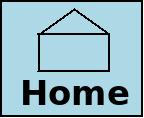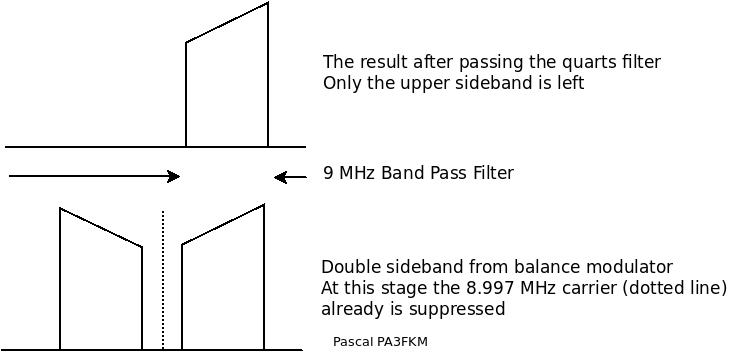 USB versus LSB
USB versus LSB USB versus LSB
USB versus LSB
USB versus LSB
Many HAM operators do not know neither understand why we are using LSB on the lower band
while we use USB on all other bands.
There is a historically technical reason for this
Generating Single Side Band
In the old days believe it or not becoming a HAM generally meant one either had to build his own transceiver or
use old military equipment left over from the second world war.
In both cases this meant either AM or CW operation, a Single Side band was a niche as it was not available on
dump radio's and building it yourself meant a (at the time) radical different design of the transmitter using a heterodyne setup very much alike most receivers of the time.
Also when using the filter method in creating SSB,
it meant one had to use a quarts filter and special quarts for selecting one of the required side-bands LSB and USB.
These filters where until the late 90's very expensive and in the old days hardly obtainable.
The solution to this would be creating your own filter made of relatively cheap xtals as used for CB radio.
These have their ground frequency around 9 MHz and also slightly could be detuned downwards as required for the Side-band selection.
By lowering the 9 MHz side-band oscillator the Upper Side band would fit through the 9 MHz filter while the Lower Side Band would be blocked.
 SSB side-band selection
SSB side-band selection
The 8020 Concept
Using a Intermediate Frequency of 9MHz had another advantage. Using a VFO able to be tuned from 5.0 to 5.5 MHz
Adding both frequencies resulting in a tunable range of 14.0 to 14.5 MHz while
Subtracting the range would be 4.0 to 3.5 MHz, in that order indeed, such covering both 80M and 20M band.
This however meant not just the tuning range would be inverted, but also the side-band would be inverted
Turning the USB signal from the exciter into a LSB signal on the 80M band.
A transceiver setup like this was known as a 8020-Transceiver.
 The 8020 Concept
The 8020 Concept
40M and 160M
Just by slightly modifieing the VFO, both 160 and 40 Meter bands would become available while keeping the image frequency.
Far enough from the desired frequency in order to be able to be blocked by reasonable output filters.
What about 60M ?
With a few exceptions the whole idea of using LSB on the lower bands was widely adopted by radio amateurs only.
At 60M being introduced only recently while all modern HAM radio's are capable handling both LSB and USB,
as well as the fact that not all HAM radio's are able to operate on 60M while most vintage commercial radio's only
can handle USB there was a good reason to deviate from this settlement.
Other ways to produce SSB
There are two more options to produce a SSB signal, called
(The Hartley method) Long forgotten and cumbersome as it required a analog way to do a Hilbert transformation of the audio signal
which at the time was very difficult to archive in a stable way.
However these days using SDR it is the defacto way to support this mode.
(The weaver method) Even more a source of trouble required even more difficult to adjust filters that tend to runaway with the slightest temperature change.
I have never heard of someone actually using this method.
Satellite operation
As many amateur Satellite linear transponders have their uplink around 435MHz while the downlink resides just below 146 MHz,
The conversion generally is done by mixing with 289 MHz resulting in a spectrum inversion, such causing the effect of
tuning transmitter frequency up resulting in receiver frequency down and the USB signals send to the upload
to be heard back als LSB signals on the download.